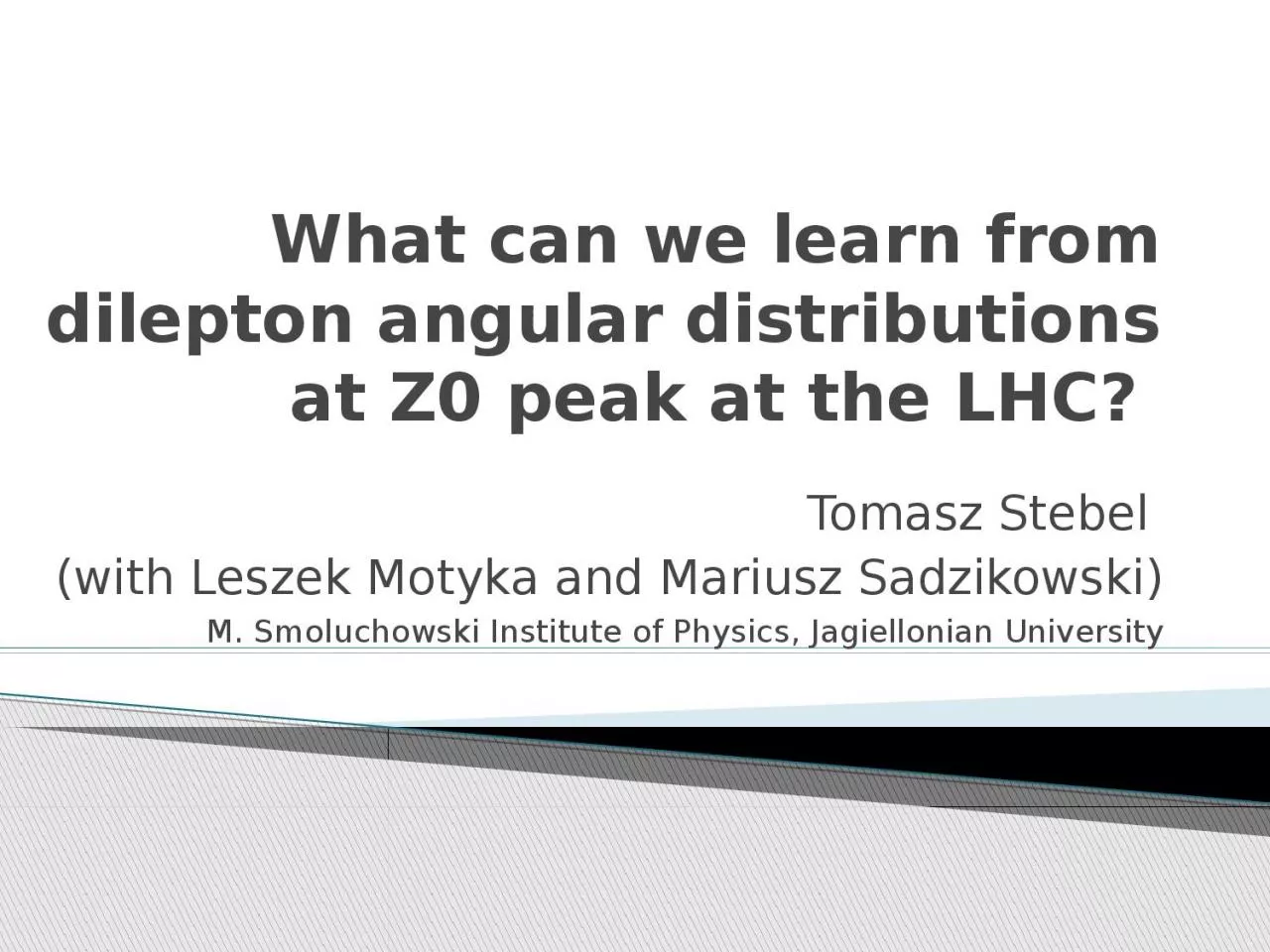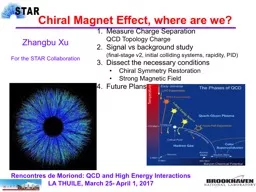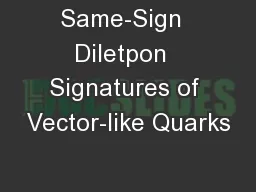PPT-What can we learn from dilepton
Author : brooke | Published Date : 2024-02-03
angular distributions at Z0 peak at the LHC Tomasz Stebel with Leszek Motyka and Mariusz Sadzikowski M Smoluchowski Institute of Physics Jagiellonian University
Presentation Embed Code
Download Presentation
Download Presentation The PPT/PDF document "What can we learn from dilepton" is the property of its rightful owner. Permission is granted to download and print the materials on this website for personal, non-commercial use only, and to display it on your personal computer provided you do not modify the materials and that you retain all copyright notices contained in the materials. By downloading content from our website, you accept the terms of this agreement.
What can we learn from dilepton: Transcript
Download Rules Of Document
"What can we learn from dilepton"The content belongs to its owner. You may download and print it for personal use, without modification, and keep all copyright notices. By downloading, you agree to these terms.
Related Documents














